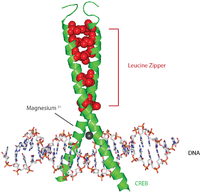
Photo from wikipedia
ABSTRACT Anders, Riès, van Maanen and Alario put forward evidence accumulation modelling of object naming times as an alternative to neural network models of lexical retrieval. The authors exemplify their… Click to show full abstract
ABSTRACT Anders, Riès, van Maanen and Alario put forward evidence accumulation modelling of object naming times as an alternative to neural network models of lexical retrieval. The authors exemplify their approach using data from the blocked-cyclic naming paradigm, requiring speakers to repeatedly name small sets of related or unrelated objects. The effects observed with this paradigm are understood reasonably well within the tradition of neural network modelling. However, implemented neural network models do not specify interfaces for task-specific top-down influences and response strategies that are likely to play a role in the blocked-cyclic naming paradigm, distinguishing it from continuous, non-cyclic manipulations of the naming context. I argue that the evidence accumulation approach falls short on this account as well, as it does not specify the potential contribution of task-specific top-down processes and strategic facilitation effects to the response time distributions. Future endeavours to model or fit data from blocked-cyclic naming experiments should strive to do so by simultaneously considering data from continuous context manipulations.
Journal Title: Cognitive Neuropsychology
Year Published: 2017
Link to full text (if available)
Share on Social Media: Sign Up to like & get
recommendations!